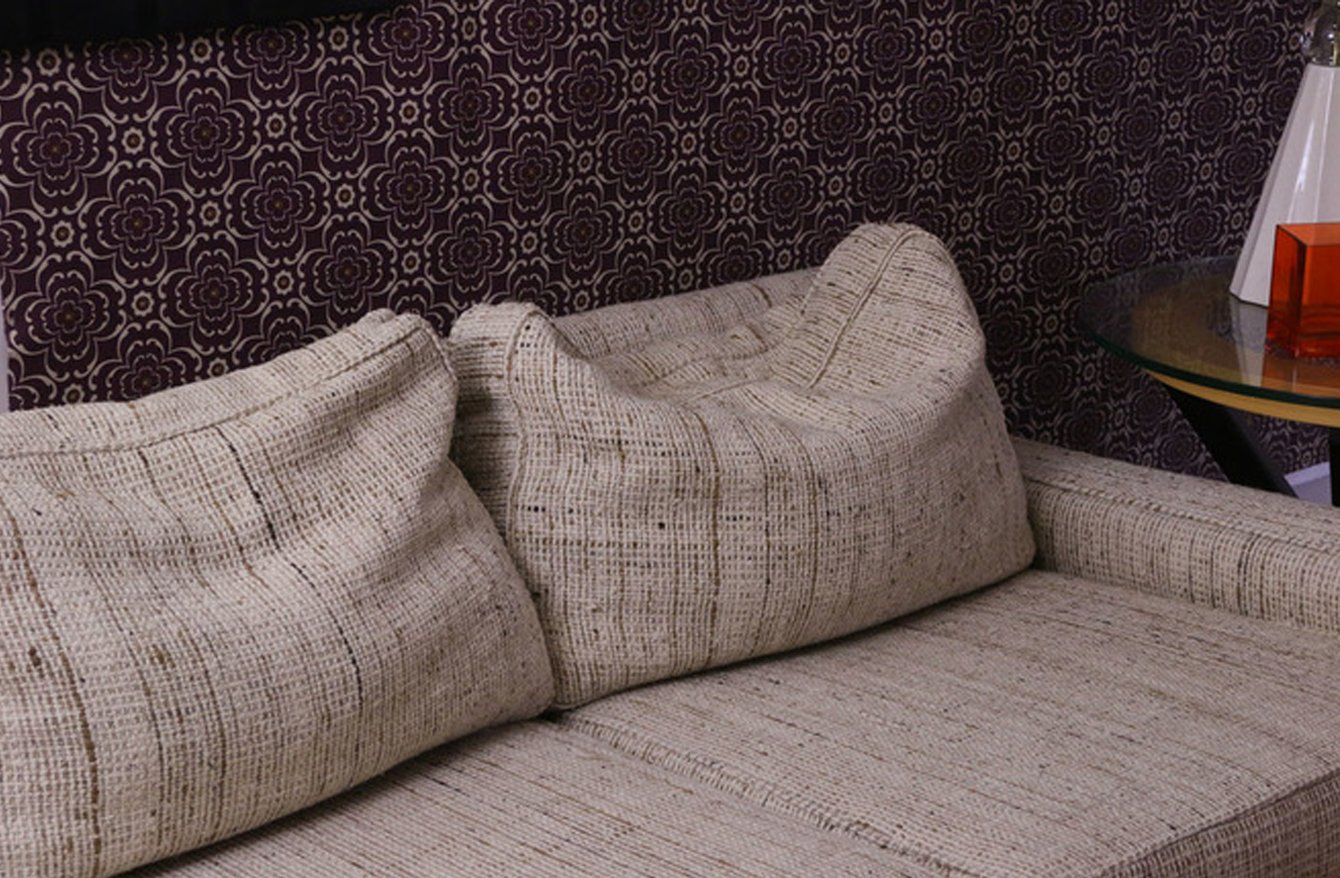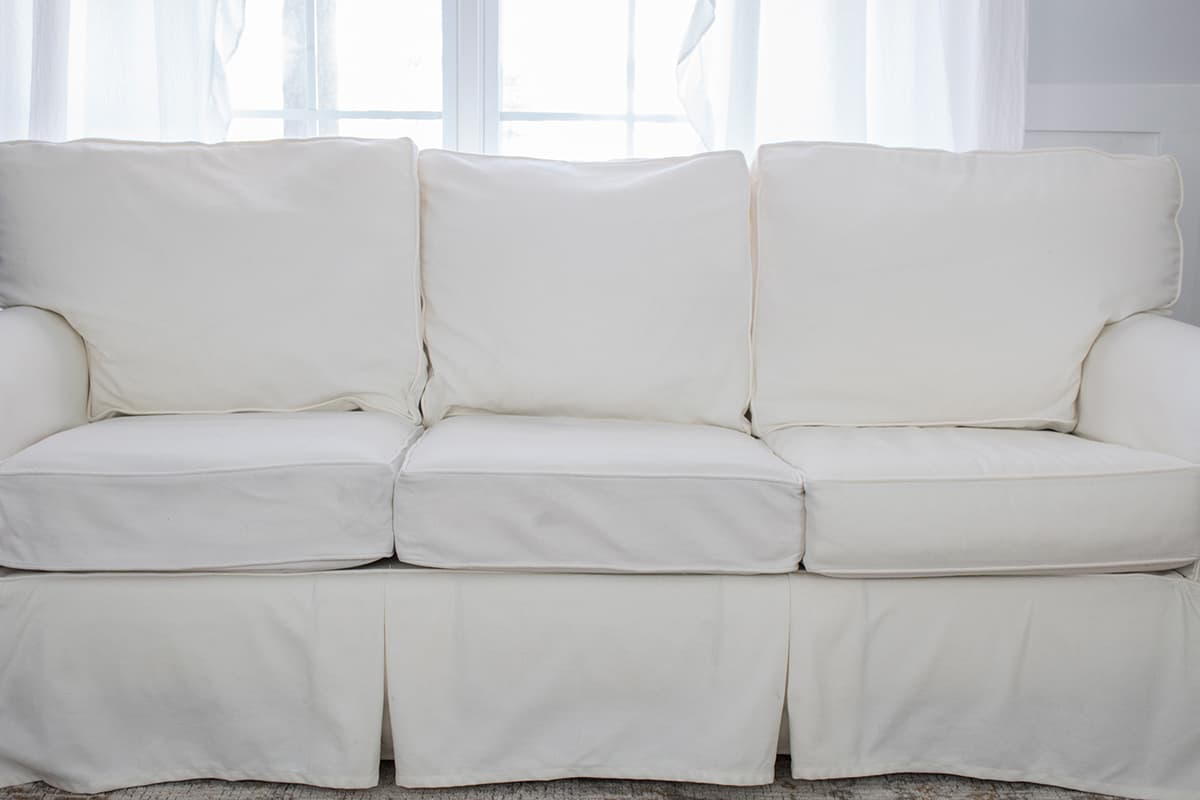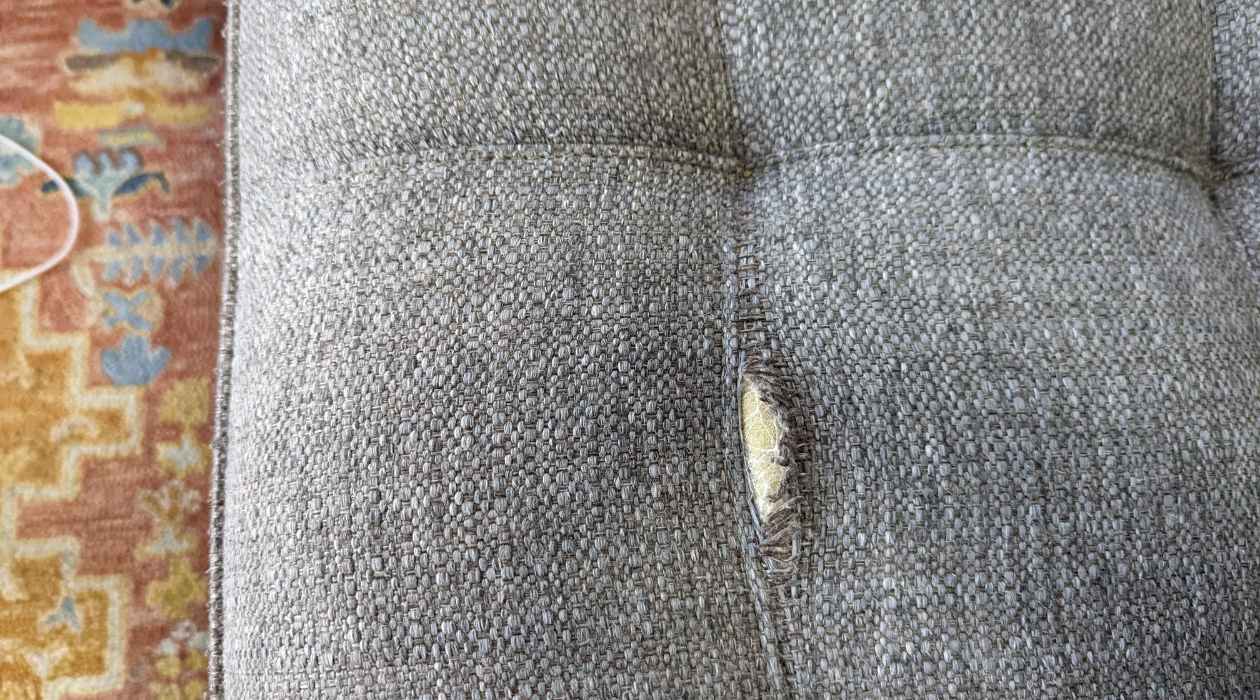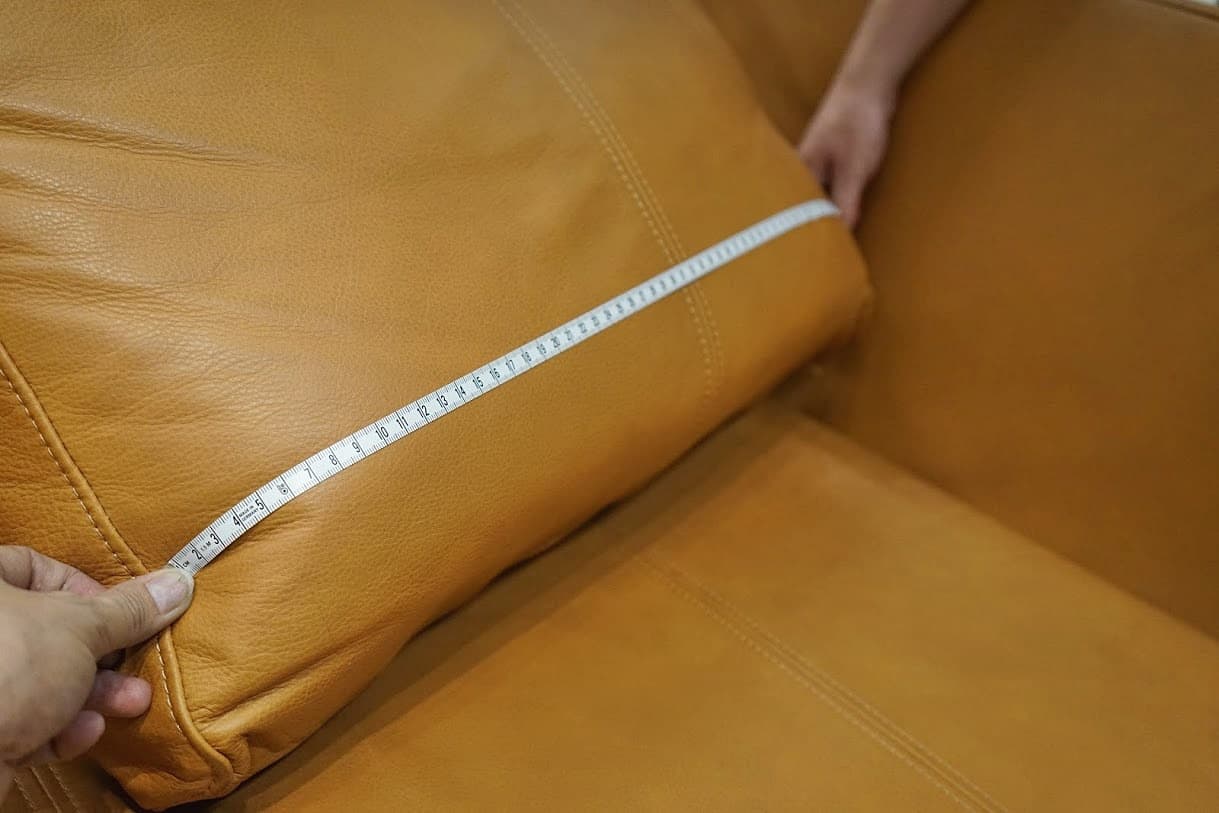Home>Furniture>Living Room Furniture>How To Fix Saggy Couch Cushions That Are Attached


Living Room Furniture
How To Fix Saggy Couch Cushions That Are Attached
Modified: April 22, 2024
Learn how to easily fix saggy couch cushions that are attached to your living room furniture. Say goodbye to uncomfortable seating and restore your couch's comfort.
(Many of the links in this article redirect to a specific reviewed product. Your purchase of these products through affiliate links helps to generate commission for Storables.com, at no extra cost. Learn more)
Introduction
When it comes to the comfort and longevity of your living room furniture, saggy couch cushions can be a real downer. Over time, the foam padding in your couch cushions may lose its shape, causing them to sag and lose their support. This can make sitting on the couch uncomfortable and can even affect the overall aesthetics of your living room.
But fear not! There are several ways to fix saggy couch cushions that are attached to the frame. Whether you’re dealing with a small amount of sag or cushions that have completely lost their shape, this article will guide you through the steps to bring your couch back to its former glory.
In this article, we’ll explore different methods to fix saggy couch cushions that are attached, including reinforcing the springs, adding additional foam padding, restuffing with polyester fill, and repairing or replacing the attachment mechanism. These techniques are affordable, easy to implement, and can greatly extend the lifespan of your couch.
So, if you’re ready to say goodbye to those uncomfortable saggy cushions and hello to a more supportive seating experience, let’s dive in and explore how to fix saggy couch cushions that are attached!
Key Takeaways:
- Say goodbye to saggy couch cushions by reinforcing the springs, adding foam padding, or restuffing with polyester fill. These affordable methods can bring back comfort and support to your living room furniture.
- Don’t let saggy couch cushions ruin your seating experience. Assess the sag, repair the attachment mechanism, and rejuvenate your couch for a more comfortable and longer-lasting seating solution.
Read more: How To Restuff Attached Couch Cushions
Assessing the extent of the sag
Before diving into the fix, it’s important to assess the extent of the sag in your couch cushions. This will help you determine which method will be most effective in providing the necessary support.
Start by sitting on the couch and paying attention to the comfort and support you feel. Take note of any noticeable sinking or unevenness in the cushions. Next, remove the seat cushions from the couch and examine them closely.
Inspect the foam padding inside the cushions. Is it visibly worn out or compressed? Are there any lumps or areas that have completely lost their shape? This will give you a clearer picture of the condition of your cushions and the level of sag that needs to be addressed.
Additionally, examine the attachment mechanism that holds the cushions in place. This could be a zipper, Velcro, or other fastening mechanism. Make sure it is in good condition and functioning properly. If the attachment mechanism is damaged or worn out, it may need to be repaired or replaced alongside fixing the saggy cushions.
Take measurements of the thickness and dimensions of the saggy cushions. This will be helpful when it comes to determining the amount of additional padding or filling needed to restore the cushions to their original shape and support.
By thoroughly assessing the extent of the sag, you’ll be better equipped to choose the most appropriate method for fixing your saggy couch cushions. Whether it’s reinforcing the springs, adding foam padding, restuffing with polyester fill, or repairing the attachment mechanism, a thorough assessment will ensure that you tackle the problem effectively.
Reinforcing the springs
If your couch cushions have a noticeable sag and lack support, reinforcing the springs can be an effective solution. The springs in your couch cushions are responsible for providing bounce and firmness, so ensuring their proper functioning is essential.
First, you’ll need to access the springs underneath the cushions. Depending on the design of your couch, this may involve removing the fabric covering from the bottom of the couch or unzipping the cushion covers.
Once you have access to the springs, examine them for any signs of damage or wear. Look for loose or broken springs that may be contributing to the sag. If you find any damaged springs, they will need to be replaced to restore the cushion’s support.
If the springs are in good condition but simply lack tension, you can tighten them to improve the cushion’s firmness. You can accomplish this by using zip ties or spring clips to secure the springs together and create more tension.
Another option is to use twine or upholstery cord to tie the springs together in a grid pattern. This will distribute the weight evenly and prevent individual springs from sagging. Make sure to tighten the twine or cord securely, but not excessively, as you want the springs to have some flexibility.
If your couch has sinuous or zigzag springs, you can reinforce them by adding support wires or clips. These additional supports will help distribute the weight evenly, providing better support and preventing sagging.
After reinforcing the springs, carefully put the cushions back in place and test the firmness and support. You should notice a significant improvement in the overall feel of the cushions. However, if the sag is still noticeable, you may need to combine this method with other techniques, such as adding foam padding or restuffing the cushions.
Reinforcing the springs is a cost-effective way to restore support and firmness to your saggy couch cushions. By ensuring the proper functioning of the springs, you can enjoy a more comfortable seating experience and extend the lifespan of your couch.
Adding additional foam padding
If your couch cushions have lost their shape and are experiencing a significant sag, adding additional foam padding can help restore their form and provide much-needed support. This method is especially effective when the existing foam padding has become compressed or worn out over time.
To add additional foam padding to your couch cushions, you’ll need to measure the dimensions of the cushions and purchase foam inserts or foam padding sheets that match those measurements. It’s recommended to choose high-density foam for better durability and support.
Start by removing the cushion covers from the cushions to access the existing foam padding. If the cushions are attached, you may need to unzip or unfasten the covers to reach the foam.
Next, carefully place the additional foam padding on top of the existing foam. You can cut the foam to match the shape and size of the cushion using a utility knife or sharp scissors. Make sure to align the foam properly to ensure an even distribution of support.
If the sag is concentrated in specific areas of the cushion, you can also cut smaller pieces of foam to place in those specific spots. This targeted approach will provide extra support where it’s needed the most.
Once you’ve added the additional foam padding, place the cushion cover back over the foam. Ensure that the cover is stretched evenly and that there are no wrinkles or folds that might affect the cushion’s appearance or comfort.
If the cushion cover has a zipper, zip it up tightly to secure the foam padding in place. If it doesn’t have a zipper, you can use upholstery adhesive or fabric glue to secure the edges of the cover together.
After completing this process with all the cushions, test the seating experience. You should notice a significant improvement in the firmness and support of the cushions. The added foam padding will help restore the shape of the cushions and provide a comfortable and supportive seating surface.
Adding additional foam padding is an effective and relatively simple way to fix saggy couch cushions. It’s a cost-effective solution that can greatly enhance the comfort and longevity of your couch.
Try adding a layer of foam or batting underneath the cushions to add support and firmness. You can also unzip the cushions and add more stuffing if needed.
Restuffing with polyester fill
If your couch cushions have lost their firmness and are experiencing a noticeable sag, restuffing them with polyester fill can be an excellent solution. Polyester fill is a fluffy and resilient material that can restore the shape and support of your cushions.
To restuff your couch cushions with polyester fill, begin by removing the cushion covers to access the inner filling. If your cushions are attached, you may need to unzip or unfasten the covers.
Next, carefully remove the existing filling from the cushions. This may be foam, batting, or down feathers. Set aside the old filling for future use or disposal.
Once the cushions are empty, take the polyester fill and fluff it up to ensure it’s evenly distributed. Begin filling the cushions starting from the corners and working towards the center. Be generous with the fill, but avoid overstuffing to maintain a comfortable seating surface.
As you fill the cushions, periodically shake and pat them to distribute the fill evenly and prevent lumps or unevenness. Take your time to ensure each cushion is properly and evenly stuffed.
For a smoother finish, you can also use batting or a quilted mattress topper between the polyester fill and the cushion cover. This will provide an extra layer of cushioning and create a uniform appearance.
Once you’re satisfied with the amount of polyester fill, carefully place the cushion cover back over the cushions. Make sure the cover is stretched evenly and that there are no wrinkles or folds that might affect the appearance or comfort of the cushions.
If the cover has a zipper, zip it tightly to secure the fill in place. If there’s no zipper, you can use upholstery adhesive or fabric glue to seal the cover edges together.
Finally, test out the cushions by sitting on them. You should feel a significant improvement in the firmness and support. The polyester fill will give the cushions a plump and comfortable feel, restoring their shape and making your couch as good as new.
Restuffing with polyester fill is a cost-effective way to fix saggy couch cushions. It’s a simple yet effective solution for bringing comfort and support back to your living room furniture.
Read more: How To Reupholster Attached Couch Cushions
Repairing or replacing the attachment mechanism
If your couch cushions are sagging and the attachment mechanism that holds them in place is damaged or worn out, it’s important to repair or replace it to ensure proper support and stability.
Start by assessing the condition of the attachment mechanism. This could be a zipper, Velcro, or other fastening method. Look for any signs of damage such as broken zippers, loose Velcro, or worn-out fasteners.
If the attachment mechanism is damaged but still salvageable, you can attempt a repair. For a broken zipper, you can replace it with a new one of the same length. This may require sewing skills or the help of a professional if you’re not confident in your sewing abilities.
If the issue is with Velcro, you can purchase new strips of Velcro to replace the old ones. Make sure to clean the area where the Velcro will adhere before applying the new strips for optimal results.
In some cases, the attachment mechanism may be beyond repair or have worn out completely. In such instances, it’s best to replace the mechanism entirely. This may involve removing the old attachment method and installing a new one.
You can find replacement attachment mechanisms at upholstery supply stores or online. Make sure to choose a method that is compatible with your couch and cushions. Common options include zippers, hook-and-loop fasteners, or even snap buttons.
If you’re not comfortable with DIY repairs or replacements, it’s advisable to consult a professional upholstery repair service. They have the expertise and tools to handle the job efficiently and ensure a secure and long-lasting attachment mechanism.
Repairing or replacing the attachment mechanism is crucial for maintaining the stability and structural integrity of your couch cushions. Properly secured cushions will not only prevent further sagging but also enhance the overall appearance of your living room furniture.
Remember to regularly inspect the attachment mechanism and address any issues promptly to avoid further damage and the need for more extensive repairs.
Conclusion
Saggy couch cushions can be a real nuisance, affecting both the comfort and aesthetics of your living room furniture. However, with the right techniques and a little effort, you can easily fix the sag and bring your couch back to life.
In this article, we explored several methods for fixing saggy couch cushions that are attached. From reinforcing the springs to adding additional foam padding, restuffing with polyester fill, and repairing or replacing the attachment mechanism, there are solutions to suit different levels of sag and cushion condition.
Assessing the extent of the sag is an important first step, as it helps determine the most appropriate method to address the issue. Reinforcing the springs can restore support and firmness to the cushions, while adding extra foam padding can bring back their shape and comfort.
Restuffing with polyester fill is a cost-effective way to plump up saggy cushions, providing a plush and supportive seating surface. Finally, repairing or replacing the attachment mechanism ensures that the cushions stay securely in place, preventing further sagging.
It’s essential to find the method or combination of techniques that works best for your specific couch and cushions. Remember to take accurate measurements, follow the instructions carefully, and test the results to ensure optimal comfort and support.
By taking the time to fix saggy couch cushions, you not only improve your seating experience but also extend the lifespan of your furniture. It’s a worthwhile investment that can make a significant difference in the overall look and feel of your living room.
So, say goodbye to uncomfortable seating and hello to a rejuvenated couch. Follow the steps outlined in this article and get ready to enjoy the comfort and support of your newly revived sofa!
Frequently Asked Questions about How To Fix Saggy Couch Cushions That Are Attached
Was this page helpful?
At Storables.com, we guarantee accurate and reliable information. Our content, validated by Expert Board Contributors, is crafted following stringent Editorial Policies. We're committed to providing you with well-researched, expert-backed insights for all your informational needs.















0 thoughts on “How To Fix Saggy Couch Cushions That Are Attached”